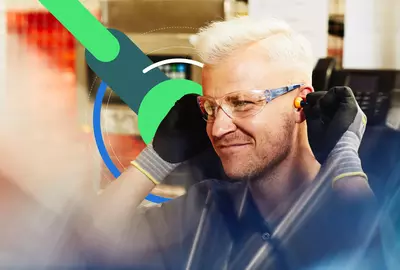“LinkedIn is quickly becoming your most important tool for advancing your career and marketing your skills. That’s because first impressions have gone digital: people are learning about you online before they ever shake your hand.”
William Aruda, Social Branding Consultant
LinkedIn represents the world’s largest professional online community. It has 500 million members worldwide, and is growing at a rate of two new members a second.
In recent years the professional networking site has become a richly detailed, customised and, if optimised correctly, can be an incredibly influential asset for your career.
The platform is essentially an all-encompassing CV, cover letter, references document, content platform and contact database and should be considered as a personal branding priority for anyone looking to network and build important relationships during their job search.
LinkedIn should, therefore, be considered a powerful extension of your CV and your profile page should be refined and edited on a regular basis. Here’s how you should go about polishing your LinkedIn profile for your next job search.
Optimising LinkedIn.
Optimise your headline and URL.
By default, LinkedIn creates your headline with your current job title and company. However, this can be altered and optimised at any time, so use your headline to spell out your specialism, using keywords that are likely to come up in the job role searches you want to appear in. Ensure that it includes your key attributes, benefits your company offers or your geographic location if you work in a specific area.
Randstad’s Ruth Jacobs believes that LinkedIn users should “want to distance yourself from the pack by steering clear of using the same tired buzzwords and phrases. It can be tempting to opt for the same traditional expressions, but a bit of extra thought can help your application stand out from the competition.”
You can also amend your profile’s default URL and create something which will resonate with any searches your future employers make. So if you want to avoid a URL which doesn’t contain an incoherent series of numbers, try clicking on the “customise your public profile URL” icon when editing your profile and type in something which is a little more memorable, for example: http://www.linkedin.com/in/[first name; last name]
Capitalise on your LinkedIn summary.
Your summary should be an elevator pitch, not a historical review.
It should be designed to make your ideal ‘audience’ want to reach out and discover more. It may be all about you but it should convey everything you want your recruiters to know. Before writing, always consider who you want to reach with your summary and think about how to present and prioritise your most important achievements.
Tailor your experience.
Think of your profile as a narrative. It should all lead up to your next dream role by focussing on only the experience that is relevant to where you want it to be. Sometimes you will need to edit ruthlessly, so always portion weight to your most suitable and impressive skills and experience.
To help tell your story come to life you can add images or documents to it. Think of the social network as an extension of your personal website or blog, so adding evidence of relevant, insightful and engaging written or design work is a must.
Reference your online presence.
Make sure you also add links to work-related blogs, online portfolios or any spaces you have to promote your own personal brand. When linking to your blog, always ensure that the anchor text you use is keyword optimised or branded rather than choosing LinkedIn’s standard “Blog” option. You can do this by clicking edit on your website links and selecting “other” in the drop-down. This is a great way to ensure your blog content is easy to find and will add SEO value to your site too.
Build your trust.
In some cases, two powerful recommendations can be worth more than fifty endorsements. Although many might be reluctant, it is always worth reaching out to previous employees or influential people you know and asking whether they can provide a kind word or two for your profile.
Another way to build trust and get noticed is to use your status updates to share industry-relevant content – it shows you are a committed professional who is alert to topical conversations and changing landscapes. Try share insightful and engaging content as much as possible, sometimes it can provoke interesting discussions and conversations with influencers and potential employers.
Finally, you should always highlight the groups you join on your profile. It helps present you as an active and engaged participant in your chosen field.
First impressions.
The truth is that before you reach out to shake their hand, your next potential employer has probably already familiarised themselves with you on LinkedIn.
It is here you are making your first impression, so ensure you are as active as possible on the site and are presenting the best possible image of yourself.
Building a personal brand is imperative to ensure that your CV stands out from the rest. Here's how to go about creating your personal brand using platforms such as LinkedIn.






